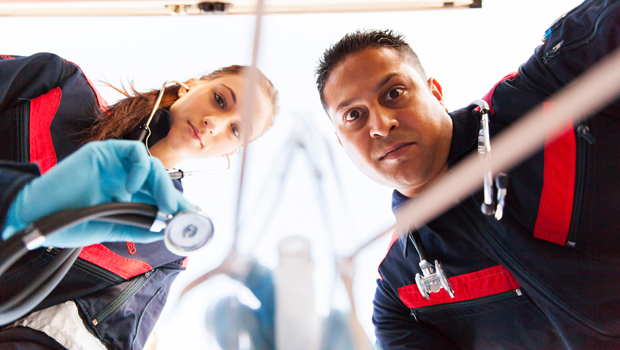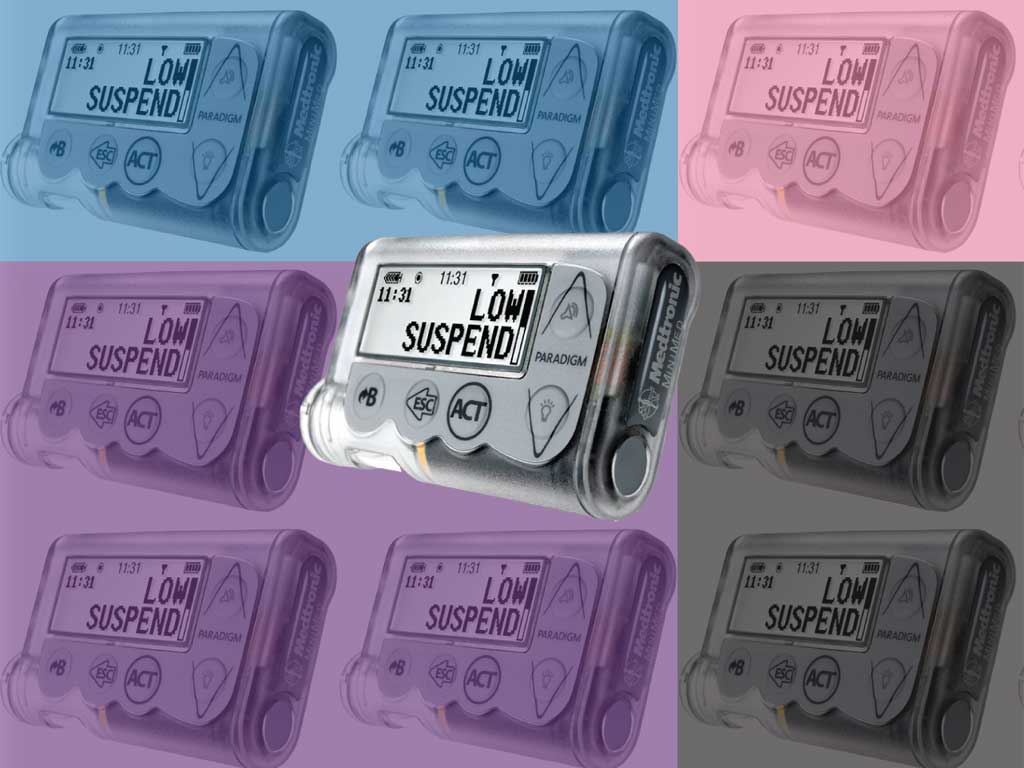The Ambulance of Shame

I came out of my dreamlike state, trying to figure out where I was and what was happening. This didn’t feel like my bed, or my couch. I could hear things but I didn’t recognize the voices that were around me.
“He looks like he’s coming out of it now,” said one voice.
Things started making a little more sense. It had happened again. I was in the back of an ambulance. I was coming out of an insulin shock.
“Can you hear me?” shouted another. “You had a little trouble. This isn’t very good for you, you know.”
Suddenly I was awash in shame. I couldn’t believe this happened to me…again.
“You really shouldn’t let this happen to you,” the second voice shouted.
Then, just as quickly, shame changed to anger. I had been through this drill before. I had met an EMT team like this: Good EMT and Bad EMT, the one who did his/her job with compassion and skill, while the other castigated you.
I wished I had said to the Bad EMT, “How dare you! Who do you think you are, judging me?” Instead, I was mute and in no condition for an argument.
I’ve lived 31 of my 44 years with Type 1 diabetes and, like everyone else who’s dealing with this condition, sometimes my blood sugar levels drop. Usually I’m able to handle it without anyone noticing. This time, though, it just got the better of me.
During the ride, I slowly tried to retrace my steps to how I ended up this way. I had to drop a car off at my in-laws’ condo a little over a mile from my house. I could have taken a cab to get home, but it was just such a short walk and I thought I’d get to enjoy the beautiful summer weather. Also, there’s a Trader Joe’s just a couple blocks from the condo, so I figured I’d do a little shopping on the way home.
I was wearing my insulin pump and continuous glucose monitor on the walk. However, I had awakened several times the night before to my CGM mistakenly reading my sugar in the 50s. I checked my blood sugar levels each time and I was consistently in the low 100s. Wanting to get a good night’s sleep, I turned the alarms off…and then forgot to turn them back on in the morning.
So I walked and my blood sugar dropped. And I walked. And my blood sugar kept dropping. And then, so did I.
A good Samaritan called 911, and an ambulance arrived. Good EMT complimented my Runner ID bracelet, on which I have my name, my wife’s name and phone number, and the words “Type 1 Diabetic” and “Living the Dream.” Bad EMT took advantage of my less-than-coherent nature to shock-shame me some more.
“Your veins are really difficult, you know. We had a hell of a time getting a line in you.”
I looked down and saw the battle scars all across my hands and arms. Bad EMT was no good at finding veins.
“We’re going to take you to the emergency room now and get some food in you before we let you go,” he said.
That snapped me out of my stupor. “No. I don’t want to go to the emergency room,” I said.
“We can’t let you go until we know…”
“I’m not going to the emergency room,” I said again. And shot him the look to let him know I wasn’t screwing around.
Good EMT tried to broker the peace. “I noticed you have some chocolate-covered pretzels in your bag. If you eat some of them, I think it’ll be OK,” she said.
Bad EMT would not accept the terms. He pressed on. “We talked to your wife,” he said. “She’s really worried about you. I think she’d want you to go to the emergency room with us.”
I continued my withering stare. He flinched. He then called the doctor in the emergency room. I was put on the phone and the doctor asked me the usual battery of questions: “How old are you? What’s your name? What’s your address? How long have you had diabetes?” I answered all of the questions satisfactorily.
Then came the final one: “Has this ever happened to you before?”
“I told you I’ve had diabetes for 31 years,” I said. “Did you just seriously ask me if I’ve had insulin shock before? Did you just ask me if I’ve ever had an insulin shock in 31 years? Did you just seriously ask me that?”
The doctor demured and I was cleared to go home once my blood sugar stabilized. I called my wife and let her know I was OK and that I’d be home soon.
After eating a handful of chocolate-covered pretzels, my levels had returned to the low-70s, and I was feeling stable again.
“You’re looking much better now,” Good EMT said.
“Your sugar was 24 when we first got here. That’s not good, you know,” Bad EMT said.
I told Good EMT I was ready to go, and that I promised I’d have something to eat when I got home. I got out of the ambulance and got home without any further difficulties.
Editor’s Note: While it’s impossible to avoid less than stellar medical personnel hidden in the crowd of the many caring individuals who work as EMTs, nurses, and doctors, Brian has provided a good example of self-advocacy in action. Since no one knows your diabetes like you, your actions can sometimes determine the quality of care you receive in certain situations, especially when dealing with medical professionals who don’t know your case history.
Some tips for how to advocate for yourself in medical situations:
- Wear something that identifies you as a person with Type 1 diabetes, and make sure it includes contact info
- Designate someone to advocate for you, and ask to be put in contact with that person when you are stabilized
- Speak up often for yourself if you feel your needs aren’t being taken seriously or someone is not giving you the medication you require







